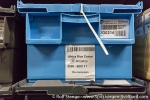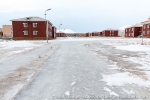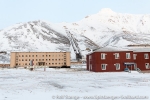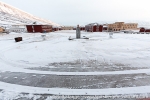-
current
recommendations- Liefdefjord
New page dedicated to one of Spitsbergen's most beautiful fjords. Background information and many photos.
- New Spitsbergen guidebook
The new edition of my Spitsbergen guidebook is out and available now!
- Liefdefjord
New page dedicated to one of Spitsbergen's most beautiful fjords. Background information and many photos.
Page Structure
-
Spitsbergen-News
- Select Month
- June 2025
- May 2025
- April 2025
- March 2025
- February 2025
- January 2025
- December 2024
- November 2024
- October 2024
- September 2024
- August 2024
- July 2024
- June 2024
- May 2024
- April 2024
- March 2024
- February 2024
- January 2024
- December 2023
- November 2023
- October 2023
- September 2023
- August 2023
- July 2023
- June 2023
- May 2023
- April 2023
- March 2023
- February 2023
- January 2023
- December 2022
- November 2022
- October 2022
- September 2022
- August 2022
- July 2022
- June 2022
- May 2022
- April 2022
- March 2022
- February 2022
- January 2022
- December 2021
- November 2021
- October 2021
- September 2021
- August 2021
- July 2021
- June 2021
- May 2021
- April 2021
- March 2021
- February 2021
- January 2021
- December 2020
- November 2020
- October 2020
- September 2020
- August 2020
- July 2020
- June 2020
- May 2020
- April 2020
- March 2020
- February 2020
- January 2020
- December 2019
- November 2019
- October 2019
- September 2019
- August 2019
- July 2019
- June 2019
- May 2019
- April 2019
- March 2019
- February 2019
- January 2019
- December 2018
- November 2018
- October 2018
- September 2018
- August 2018
- July 2018
- June 2018
- May 2018
- April 2018
- March 2018
- February 2018
- January 2018
- December 2017
- November 2017
- October 2017
- September 2017
- August 2017
- July 2017
- June 2017
- May 2017
- April 2017
- March 2017
- February 2017
- January 2017
- December 2016
- November 2016
- October 2016
- September 2016
- August 2016
- July 2016
- June 2016
- May 2016
- April 2016
- March 2016
- February 2016
- January 2016
- December 2015
- November 2015
- October 2015
- September 2015
- August 2015
- July 2015
- June 2015
- May 2015
- April 2015
- March 2015
- February 2015
- January 2015
- December 2014
- November 2014
- October 2014
- September 2014
- August 2014
- July 2014
- June 2014
- May 2014
- April 2014
- March 2014
- February 2014
- January 2014
- December 2013
- November 2013
- October 2013
- September 2013
- August 2013
- July 2013
- June 2013
- May 2013
- April 2013
- March 2013
- February 2013
- January 2013
- December 2012
- November 2012
- October 2012
- September 2012
- August 2012
- July 2012
- June 2012
- May 2012
- April 2012
- March 2012
- February 2012
- January 2012
- December 2011
- November 2011
- October 2011
- September 2011
- August 2011
- May 2011
- April 2011
- March 2011
- February 2011
- January 2011
- December 2010
- November 2010
- September 2010
- August 2010
- July 2010
- June 2010
- May 2010
- April 2010
- March 2010
- February 2010
- November 2009
- October 2009
- August 2009
- July 2009
- June 2009
- May 2009
- April 2009
- March 2009
- February 2009
- January 2009
- December 2008
- November 2008
- October 2008
- August 2008
- July 2008
- June 2008
- May 2008
- April 2008
- March 2008
- February 2008
- April 2000
- Select Month
-
weather information
-
Newsletter

| Guidebook: Spitsbergen-Svalbard |
Home
→ February, 2016
Monthly Archives: February 2016 − News & Stories
The famous seed vault – 29 February, 2016
Mon
29 Feb
2016
Of course you may say it is just a big freezer and nothing else. That is, essentially, true. But – again – of course it is so much more than just that. A hope for mankind, a lifering for survivors of global catastrophes. Well, the first sentence may be understated as much as the latter one an exaggeration, but in any way, the seed vault does attract a lot of attention. Something that also led to the new section of this website.
But actually entering the seed vault? Did not happen. It is not a place that normal people would normally get to see. Also some people who are not normal people are said to have waited in vain for that large door to open. Access is strictly regulated, and it was impossible at times when the local fire brigade opposed anyone visiting the vault. A natural safe deep inside a mountain does naturally not have emergency exits.
But occasionally, when new seeds come to the vault, the doors are opened for accredited journalists.
Even though I understood quickly the attention that the seed vault was about to get globally in 2008, I have to admit that I have never really been fascinated. It is neither part of Spitsbergen’s nature nor of its history nor is it connected to those who are living here today. Its context is not the arctic.
What does mankind actually prepare for here? What kind of catastrophes do we have to expect that can wipe out the genetic heritage of thousands of years of agriculture? You may as well say that you don’t really want to know. But it is worth noticing that the whole structure is located high enough above sea level to remain dry even in case all ice on earth was to melt.
Different countries deliver seed samples that represent the whole diversity of their crops, and they are stored near Longyearbyen under conditions that are supposed to make them last as long as by any means possible. The air temperature is strictly controlled and kept at -18°C. Hardly visitors who might cause disturbances, several strong steel doors, surveillance cameras. The whole lot.
A hallway is leading about 150 metres into the mountain before you reach a large hall. The wall that is facing the hallway is not flat, but it is gently curved into the mountain. It is easy to miss this little detail or not to pay any attention to it, but there is a bizarre reason for it: even though nobody knows of any realistic scenario that involves an explosion in the hallway, the shock waves of any explosions would be reflected back into the hallway and thus not hit the actual storage chambers, keeping the seed samples out of harm’s way.
From this hall, double doors are leading to the actual chambers (a bit like in an Egyptian pyramid). Two out of these three chambers are still largely empty.
The door to the third one is covered with ice, as it is constantly cold in there. At the time being, it is probably the coldest part of Spitsbergen anywhere. A last fence separates the visitor from the treasure, a code opens the door. Behind that door, there are huge storage racks. And there, boxes, boxes and boxes.
A suspicious gap shows where the first samples have already been retrieved again. They were from Syria and more seeds are grown now of their sorts – in Morocco, where the Syrian seed vault had been moved before it could be destroyed in the war.
Gallery – The famous seed vault – 29 February, 2016
- gallery anchor link: #gallery_859
Click on thumbnail to open an enlarged version of the specific photo.
You are walking past those racks in awe. Institutions that are devoted to the science of rice, wheat or potatoes have preserved their valuable treasures here for, well, not eternity, but as close to as possible. Most countries are represented, only a minority is still missing. North and south America, Africa and Europe, Asia, Australia, they are all in there. Some wooden boxes catch the eye because of their simple appearance: north Korea. They signed the Spitsbergen Treaty just a few weeks ago, and now the are also here in the vault.
Some inconspicuous boxes draw my attention, and I am getting goosebumps just a moment later. The sender: The International Centre for Agricultural Research in the Dry Areas, in short ICARDA. Their address: Aleppo, Syria. In this town, now destroyed by Syrian and Russian bombs, someone had been collecting seed samples to preserve them to better days in the future, when people will hopefully be able again to grow them, to take care of the nutrition of their families, their people, their country. It seems a bizarre hope! The simple boxes in the storage racks inside the permafrost of an arctic mountain are symbols of this desparate hope. May their contents find their way back into Syrian soil when it is not corrugated by bombs, but by ploughs!
The seed vault left a strong impression on me, that is for sure.
Living house in Longyearbyen in danger of collapse: evacuation
Longyearbyen is currently having tough times, especially if you happen to live in the wrong house: after the catastrophic destruction of 11 houses and the loss of two lives during an avalanche before Christmas, the old hospital had to be evacuated very quickly last week. The old hospital (gamle sykehuset) is near the Spitsbergen-Hotel (formerly Hotel Funken) upvalley from the centre. It was built in 1954 and converted to a living house with 16 flats in 1997.
More recently, the building had shown signs of movement such as minor cracks in walls and shifting angles – nothing that caused any greater concern, but it caught enough attention to ask for the report of a civil engineer. The result came Thursday last week and it hit the inhabitants like a hammer: at 4 p.m. people were told that they had to leave their homes until 10 p.m. the same day. Anything they were unable to remove from their homes would be out of reach for some time, as it was not allowed to enter the building at all from then on, initially.
Currently, the inhabitants get permission to enter their homes under restrictions to retrieve their belongings as much as possible. Some have already offered their belongings for sale or even for free to anyone who is able to pick it up.
The building is in danger of collaps, but when this may or may not happen is not known. It may collapse today or stand for another year or more. But it is not expected that people will be able to move back.
For the inhabitants, who are mostly the owners of their homes, this came as a total shock and, in some cases, it is likely to be a complete economical disaster.
The local administration (lokalstyre) has offered temporary accommodation to those concerned, but only for a couple of weeks. Not a lot of time for every for everybody to find new homes.
The old hospital (gamle sykehuset) lies within a calmer dwelling area a bit away from downtown Longyearbyen. Currently, it is not quite as calm there: the inhabitants were evacuated on very short notice last week.
Pyramiden – February 2016
Tue
23 Feb
2016
After our arctic weekend in Spiceborough (Würzburg, haha) things happened quickly: from the presentation screen to the train station, train, airport, plane, airport, hotel, airport, plane, and then suddenly … Spitsbergen. Stop, before I got that far I got a brief glimpse of mainland Norway’s northernmost coast. In the far background, you can almost see the North Cape (use a bit of fantasy and then you will see it), but this long, narrow island under the wing tip and a little bit to the right, that is Fugløya. We will be sailing there in late May with Antigua and then set course for Bear Island … but that is another story, a summer story. First, arctic winter. Although it is a strange winter, with little snow and very little ice in the west coast fjords. Some scientists believe that it may have to do with El Niño, the temporary change ocean currents in the Pacific, which has consequences for the climate of the whole globe. But it would be hard not to think of longer-lasting climate change as well. Of course, there have always been bad ice years every now and then. But the long-term tendency? That is pretty clear.
Gallery – Pyramiden – February 2016
- gallery anchor link: #gallery_858
Click on thumbnail to open an enlarged version of the specific photo.
I am joining a camera team. My job is not in front of the camera this time, but behind. One of our first trips takes us to Pyramiden. Fascinating as always, but different: parts of the place are a skating rink. Very little snow, lots of ice. And no Sascha. But he will be back within a few days. We have been to Pyramiden even before Sascha came! Yoho!
North Korea signs Svalbard Treaty
While North Korea is provoking the world by testing nuclear weapons and long-range missiles, the regime has signed the Svalbard Treaty on January 25 without much public attention. This treaty, which was signed in 1920 in Versailles and came into force in 1925, gave Norway sovereignty over the Spitsbergen archipelago (the original treaty document does not have the name Svalbard) while maintaining rights of signatory governments and their citizens to be economically and scientifically active without the need for a general permission. One of the consequences is that Spitsbergen is, in contrast to mainland Norway, not part of the Schengen Treaty area.
Svalbard is not unknown in the far east: especially in Thailand, people are quite aware of this unique job opportunity that does not require residence or work permits. The third-largest population group in Longyearbyen are Thai people, which have been forming an important part of the social and economic structure of the town for many years by now.
It is not known if the North Korean regime plans their admission to the treaty to be followed by any practical steps or any kind of presence. North Korea is also member state of the Antarctic Treaty (without voting rights). As far as known, the only North Korean activity in Antarctica was the participation of some scientists in a Soviet expedition in 1989/90.
What is Kim Jong Un doing in Svalbard? Creepy duo in Pyramiden (photo composition).
News-Listing live generated at 2025/June/15 at 07:04:06 Uhr (GMT+1)





















































